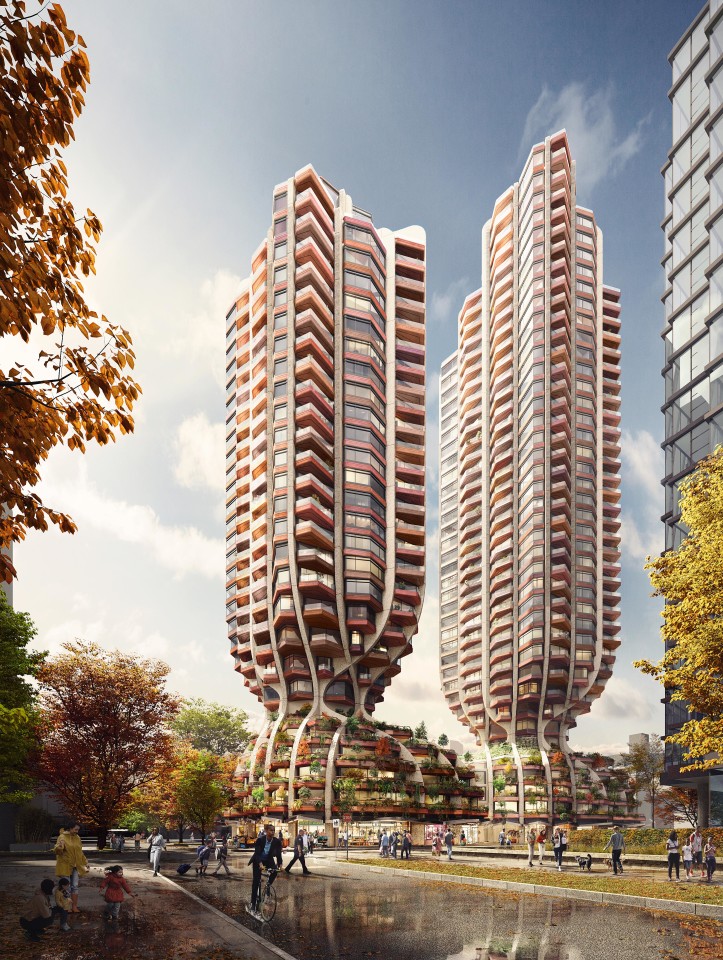Following its Little Island and The Cove parks in NYC, British firm Heatherwick Studio’s North American invasion continues with a pair of towers slated for Vancouver, Canada. Defined by an eye-catching tapering design that narrows just above their base before widening again as they rise, the “curvaceous” high-rise buildings would make significant use of wood and incorporate lots of greenery.
Named 1700 Alberni, the towers’ vaguely corn cob-like form is a little reminiscent of Zaha Hadid’s Gold Coast towers and would rise to a height of 105 m (344 ft) and 117 m (383 ft).
According to the City of Vancouver’s planning application, they would comprise 39,337 sq m (roughly 423,400 sq ft) of floorspace, spread over more than 400 residential units, many boasting private balconies, plus retail and restaurant space, a childcare facility, over 500 vehicle parking spaces, and 524 bicycle parking spaces.
Finer details are still a little light at this early stage, though the renders depict the use of wood, concrete, and glass, plus lots of greenery on the lower floors. There would also be a focus on maximizing daylight inside and the two adjacent towers would be joined by a glazed podium.

Picture Plane for Heatherwick Studio
“Heatherwick Studio has proposed designs for a new residential project in Vancouver, its first high-rise project in Canada,” says the firm. “Commissioned by Bosa Properties and Kingswood Properties in partnership, the concept aims to bring a new level of global design excellence to Vancouver, featuring two curvaceous, light-filled towers and a publicly accessible ground level plaza for community engagement.”
1700 Alberni is currently being considered for planning permission by Vancouver authorities and there’s no word yet on when the project is slated to be completed.
Source: Heatherwick Studio
Source of Article